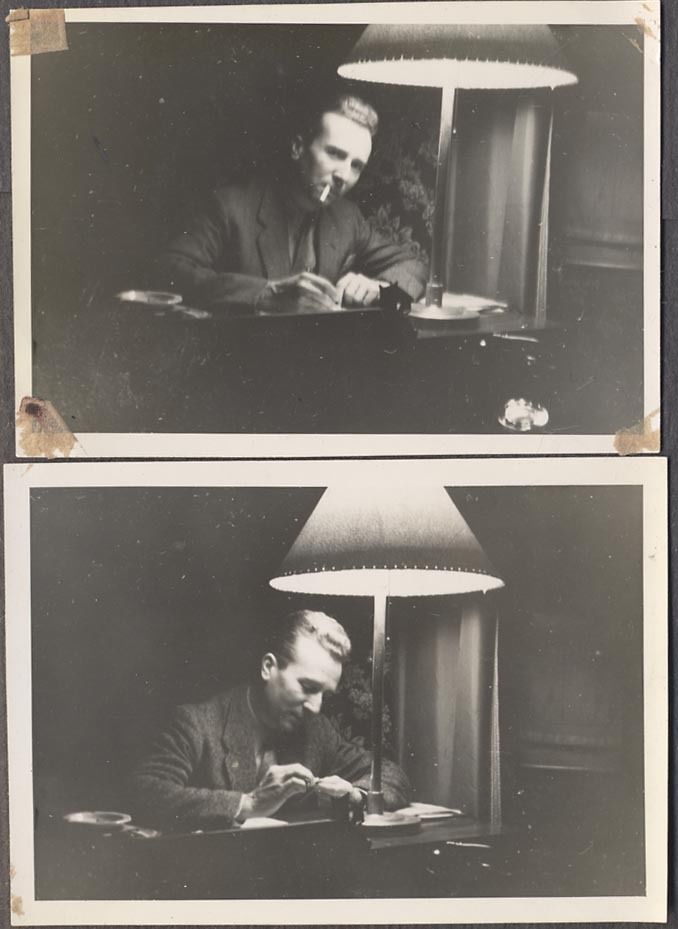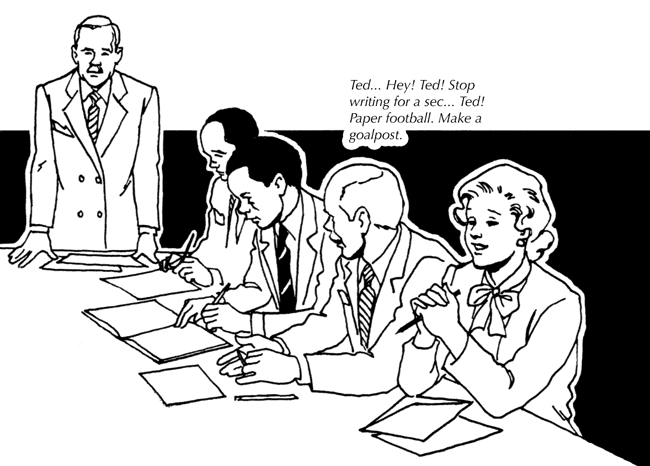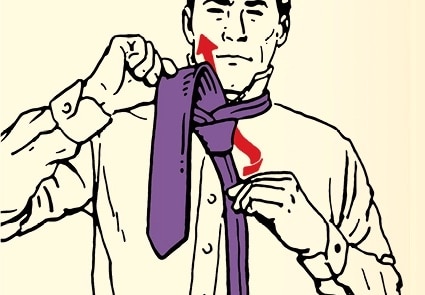“I wish to see our people hardy, vigorous, strong, able to hold their own in whatever test may arise. I wish to see them able to work and able to play hard. I believe in play, and I like to see people play hard while they play, and when they work I do not want to see them play at all.” –Theodore Roosevelt
Do you often experience a sense of restlessness in your life — an itch, an agitation, a constant furrowing of your brain’s metaphorical brow?
Restlessness is one of the acute maladies of our time, and there are many causes of it, from the gap between how fast information moves and the stubborn slowness of “real life”; our increasing distance from nature and lack of physicality; the avalanche of options we have to choose from in all areas of life; and the amount of “shadow work” corporations have outsourced to us consumers.
There’s another obvious factor in our restlessness as well, and that’s the sheer number of distractions that constantly pull at our attention, erode our focus, and keep us from concentrating on the task at hand.
Happily, while the other sources of our restlessness often require comprehensive changes to our culture and our personal lifestyle, this last factor can be attended to with the adoption of a simple principle: work when you work; play when you play.
Do But One Thing at Once
Restlessness occurs when we mix play with our work, and work with our play. A failure to keep these pursuits separate robs us of enjoyment and pleasure in our play, and of effectiveness and satisfaction in our work.
When we play while we work, by, say, surfing the internet and checking our social media feeds (we’re going to define “play” really loosely in this article as anything that’s not economically productive and is done mostly for pleasure), we don’t fully enjoy that release, because we know we really should be working, and we’re disappointed in ourselves for getting distracted. We feel guilty. At the same time, our work suffers in quality because we can’t concentrate and our day passes by in a scatter-brained haze.
Then, when we try to play that evening, by, say, going out to a party or for a bike ride, we can’t completely let go and fully enjoy the experience, because we feel dejected and restless for wasting yet another day and being so royally unproductive for the umpteenth time. We don’t feel we deserve to play. We may even try to make amends for our lack of productivity during the day by spending our evenings trying to tie up remaining loose ends — continually interrupting playtime to check our phone and send off emails.
As we turn in for the night, we have trouble evaluating how the day went as a whole. How much did we work? How much did we play? How much did we get done? How much more could we have gotten done with greater focus?
In trying to play while we work, and work while we play, we end up sabotaging the satisfactions and rewards of both, and don’t get much out of either. All we end up with is a whole lot of uncertainty, and a heaping helping of restlessness.
The solution, of course, is simple: work while you work, and play while you play.
Lord Chesterfield, a British statesman of the 18th century, expounded on the wisdom of this principle in a letter to his son:
“You may remember, that I have always earnestly recommended to you, to do what you are about, be that what it will; and to do nothing else at the same time. Do not imagine that I mean by this, that you should attend to, and plod at, your book all day long; far from it: I mean that you should have your pleasures too; and that you should attend to them, for the time, as much as to your studies; and if you do not attend equally to both, you will neither have improvement nor satisfaction from either.
A man is fit for neither business nor pleasure who either cannot, or does not, command and direct his attention to the present object, and in some degree banish, for that time, all other objects from his thoughts. If at a ball, a supper, or a party of pleasure, a man were to be solving, in his own mind, a problem in Euclid, he would be a very bad companion, and make a very poor figure in that company; or if, in studying a problem in his closet, he were to think of a minuet [ballroom dance], I am apt to believe that he would make a very poor mathematician.
There is time enough for everything, in the course of the day, if you do but one thing at once; but there is not time enough in the year, if you will do two things at a time.”
Wall Off Work and Play to Get the Most Out of Each
I believe the best way to separate your work and play, is to purposefully create play times within your work times. For the problem is not that we switch between work and play, per se, but that we do so haphazardly, whenever and wherever a distracting itch arises. These itches may interrupt what would have been a fruitful train of thought, and tend to manifest themselves so regularly, that one struggles to stitch together more than 5 minutes of uninterrupted focus at a stretch. We thus lose the chance to engage in deep work and really immerse ourselves in the task at hand.
The solution is to intentionally plan out regular, repeating work and play periods. You work uninterrupted for a set amount of time, then take a break for a set period of time. And the cycle starts again. It’s easier to stay focused when you know your work session won’t be interminable and exactly when you’ll be getting a break. And you can actually enjoy your break, knowing that you’ve earned it.
This is the beauty and wisdom behind what’s called the “Pomodoro Technique.” With this focus/productivity method, you work uninterrupted for 25 minutes, take a short 3-5 minute break, and repeat. Once you’ve done 4 work sessions, you take a longer 15-30 minute break.
I’ve found implementing the Pomodoro Technique to be enormously useful, nigh near life-changing, in terms of mitigating my restlessness and boosting my productivity. Here are some of the practices that have maximized its efficacy for me:
Experiment with the length of your work periods/breaks. Doing the 25/5 method may work well for some, but I personally like to do a 45/15 split, as 25 minutes just isn’t enough time for me to get deep enough into tasks like researching and writing. Of course, if you’re working in an office, where your boss regularly checks on you, then knocking off for 15 minutes may not be a viable option, and taking a short 3-minute break might be the only route you can take.
Experiment and figure out the split that works best with your personal work flow needs and circumstances.
Keep a “distraction to-do list.” When something you want/need to do crosses your mind during a work session (check the weather forecast/text a friend back/order more preworkout powder/find out if Bette Davis ever won an Oscar), instead of breaking off to do it right then (which will interrupt your flow and invariably turn into a rabbit hole of surfing/texting), write it down on a “distraction to-do list.” Use a pocket notebook or a note-taking app like Evernote or Todoist. Then get right back to work. Once your break time arrives, you can go back over your distraction to-do list, and attend to its entries. You’ll be surprised at how things that felt so itchy and urgent at the time, could definitely wait a half hour to be addressed.
Block distracting websites/apps automatically. To minimize the temptation to interrupt your work sessions by surfing around to apps and websites, put blocking apps on your computer and phone. There are several Pomodoro apps out there that function simply as work/break timers, but why not kill two birds with one stone by using an app that both works as a timer and blocks all your distracting websites during a work session?
Kate swears by Strict Workflow for Chrome, which does just this, letting you adjust which websites you want to block during your work sessions, and how long you want each work/break session to be. I use Focus for Mac. It allows me to not only block distracting websites for set periods of time, but also distracting apps I have on my computer as well.
Use your break times for play, chores, or other work. There are any number of things you can do on your Pomodoro breaks — it doesn’t necessarily have to be pure “play.” The activity just needs to offer some rest and refreshment from the main work task you’ve been absorbed in, so that you can return to it afterwards ready to focus; breaks are less about playing (though you can), and more about ensuring that you’re able to work while you work, so you can get stuff done and really play while you play once the workday is through.
You might take a walk, eat a snack, do some bodyweight exercises (grease that groove!), surf the net, text friends, take a hypnogogic nap, clean off and organize your desk, read a book (if you have trouble finding time to read for pleasure, try reading during your Pomodoro breaks and these short snatches will soon really add up), etc. And of course now is the time to work through that distraction to-do list!
If you work at home, your break time can be used for household chores, like washing dishes, or putting in/folding a load of laundry. Chores that feel onerous to do at other times, feel surprisingly more satisfying when you’re doing them “on the clock”; it’s nice to take a break from brainwork to engage in something tactile. You’ll be amazed at how many outstanding household to-dos you can get done once you start utilizing your break periods to tackle them.
While Francesco Cirillo, the creator of the Pomodoro Technique, recommends only doing things on your break that aren’t related to work in order to rest your brain, I’ve found I can successfully use part of my break to do work tasks that I typically find distracting, like checking and answering email. Batching email is a whole lot more effective than interrupting work every 5 minutes to look at it, which is what I used to do. And the task is different enough from my other, more mentally taxing work responsibilities, that it feels like a sufficient “break” and scratches my itch for distraction.
Don’t make your breaks too fun. One of the hardest parts of utilizing the Pomodoro Technique is not cheating on your break time, and extending it longer than scheduled. “I’ll just check out one more website and then I’ll start the work timer again.” The trick to making it easier to get back to work, is not doing things on your break that are overly distracting and engrossing. So if you know, for example, that you’re not going to be able to put down that Dan Brown novel once you pick it up, or get yourself off reddit before reading all the comments on a half a dozen threads, then choose an activity with tentacles that are less sticky.
Keep working past your break time if you get in the flow. While you should always work for at least the length of time you’ve scheduled, if you find you’ve gotten into the flow and are on a roll, don’t force yourself to break off from what you’re doing. Keep on tapping that vein of productivity for as long as it lasts, and then take your break.
If you do take a break, and find that after a few minutes, you’re feeling like you don’t need one, and are itching to get back to work, I also think it’s fine to cut your break short to do so.
All in all, be flexible with the Pomodoro Technique; experiment and figure out which practices work best for you. And know that distractions that force you to take a break from work, like an unexpected business call, meeting, or urgent issue, will invariably happen. Just do your best to set aside whatever is non-urgent, get right back to work after tackling what is urgent, and try to do as many uninterrupted work/break sessions a day as you can.
A Place for Everything, and Everything in Its Place
You’ve probably heard the maxim, “A place for everything and everything in its place.” Well, it doesn’t just apply to your material possessions but to your work and play as well.
Utilizing the Pomodoro Technique can be huge in learning how to manage and prioritize your distractions, and in helping you work when you work, and play when you play. It’ll allow you to get the most out of both pursuits, not only within your work/break hours, but in the context of your day as a whole. You enjoy each break because you know you were productive during the preceding work session. And you can play without guilt after the workday is through, because you feel you’ve earned your leisure and are able to look back with satisfaction on what you accomplished over the course of accumulated work sessions. You can play in the evening without ruining your recreation with worries about work and what you didn’t get done, and without being driven to mix work into your play as penance for wasting so much time.
When you know exactly how much you worked, and how much you played, and that you did each when they were supposed to be done, you can go to bed quite contentedly and without the burden of restlessness. Work when you work, play when you play, and you’ll have plenty of time for each, and sleep the sleep of the wonderfully productive and joyfully relaxed.








